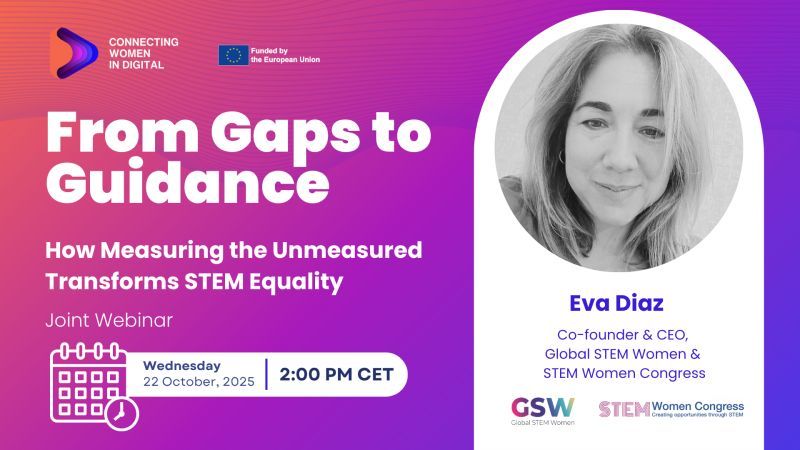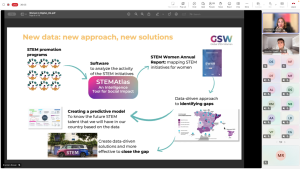Mind the data gap: using measurement to transform gender equality in STEM

For decades, the world has been trying to close the gender gap in Science, Technology, Engineering and Mathematics (STEM). Worldwide, many initiatives have been launched to inspire, educate and empower women in these fields. And yet the numbers didn’t change.
At the webinar “From gaps to guidance: how measuring the unmeasured transforms STEM equity” with our Managing Consultant, Brendan Rowan and Eva Diaz Co-founder & CEO of Global STEM Women and STEM Women Congress to discuss how intelligence tools like STEM Atlas are redefining the path to equality.
The issue is not a lack of action, but a lack of understanding of what works. The data behind these efforts is fragmented, incomplete, and too often, unmeasured.
The Persistent STEM Gender Gap
Despite the best of intentions, women remain significantly underrepresented in STEM. The reasons are deeply rooted and interconnected
- Gender stereotypes and lack of role models discourage girls from pursuing technical careers.
- Implicit biases in hiring and promotion limit progression once they do enter the field.
- Work–life balance challenges often push women out of STEM jobs mid-career.
Countless programmes have aimed to address these barriers. Yet, while workshops and promotional campaigns generate excitement, few track whether that enthusiasm leads to real change.
One critical question remains unanswered: how many girls who attend a STEM programme actually go on to choose a STEM career? Too many initiatives are “pink-washing actions” efforts that raise awareness without driving measurable outcomes.
The measurement gap: from enthusiasm to career
How many girls attend a STEM promotion programme choose a STEM career pathway? Between that first spark of interest and a lasting career lies an unmeasured stage. From an estimated 150,000 participants, only 2% go on to meaningful STEM engagement.
The STEM Atlas: an intelligence tool for social impact
A specialised software platform now analyses the activity of STEM initiatives, tracking participation, engagement, and conversion across the entire journey from first contact to career. Complementing this, the STEM Women Annual Report systematically maps STEM initiatives aimed at women, providing a comprehensive. This allows to
- Identifying gaps: creating a predictive model to know the future STEM talent that we will have in our country based on the data.
- Creating data-driven solution and more effective close the gap.

The power of role models
At the heart of this approach lies something deeply human: role models. When girls see real women succeeding in STEM inspiration turns into ambition. As Diaz puts it, progress comes from “showing them the path” of those who made it.
The goal is simple but transformative: to show the path, what truly works, spotlight role models who inspire, and build a lasting culture of inclusion.
Connect with us today and unlock the potential of our strategic expertise to drive your company forward.

